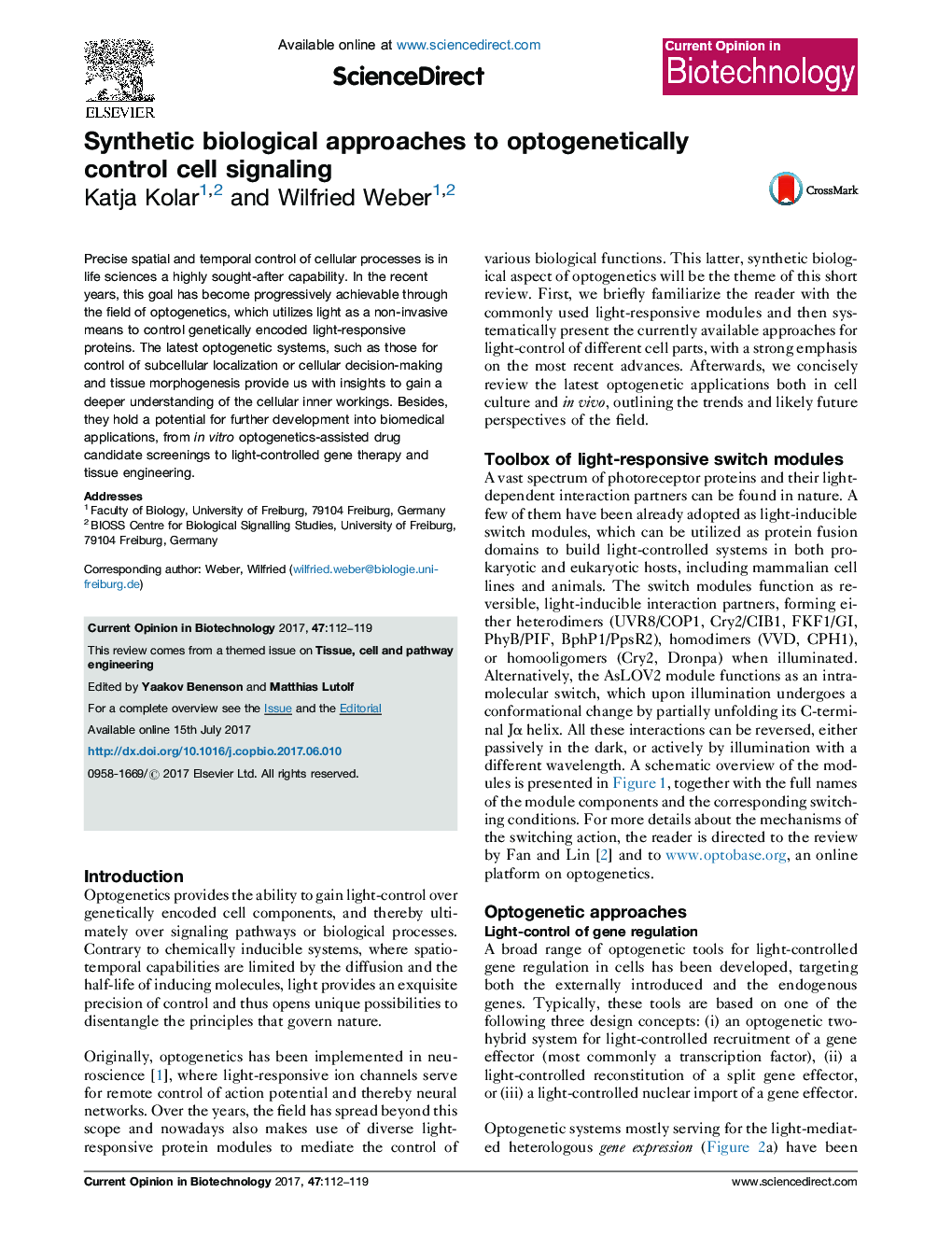| کد مقاله | کد نشریه | سال انتشار | مقاله انگلیسی | نسخه تمام متن |
|---|---|---|---|---|
| 6451432 | 1416324 | 2017 | 8 صفحه PDF | دانلود رایگان |
- Optogenetics uses light to control genetically encoded cell components.
- It is a precise tool for systematically addressing complex biological questions.
- It has a potential for applications in medicine, pharmacology and elsewhere.
- The latest optogenetic systems move from single cells to in vivo applications.
Precise spatial and temporal control of cellular processes is in life sciences a highly sought-after capability. In the recent years, this goal has become progressively achievable through the field of optogenetics, which utilizes light as a non-invasive means to control genetically encoded light-responsive proteins. The latest optogenetic systems, such as those for control of subcellular localization or cellular decision-making and tissue morphogenesis provide us with insights to gain a deeper understanding of the cellular inner workings. Besides, they hold a potential for further development into biomedical applications, from in vitro optogenetics-assisted drug candidate screenings to light-controlled gene therapy and tissue engineering.
184
Journal: Current Opinion in Biotechnology - Volume 47, October 2017, Pages 112-119
